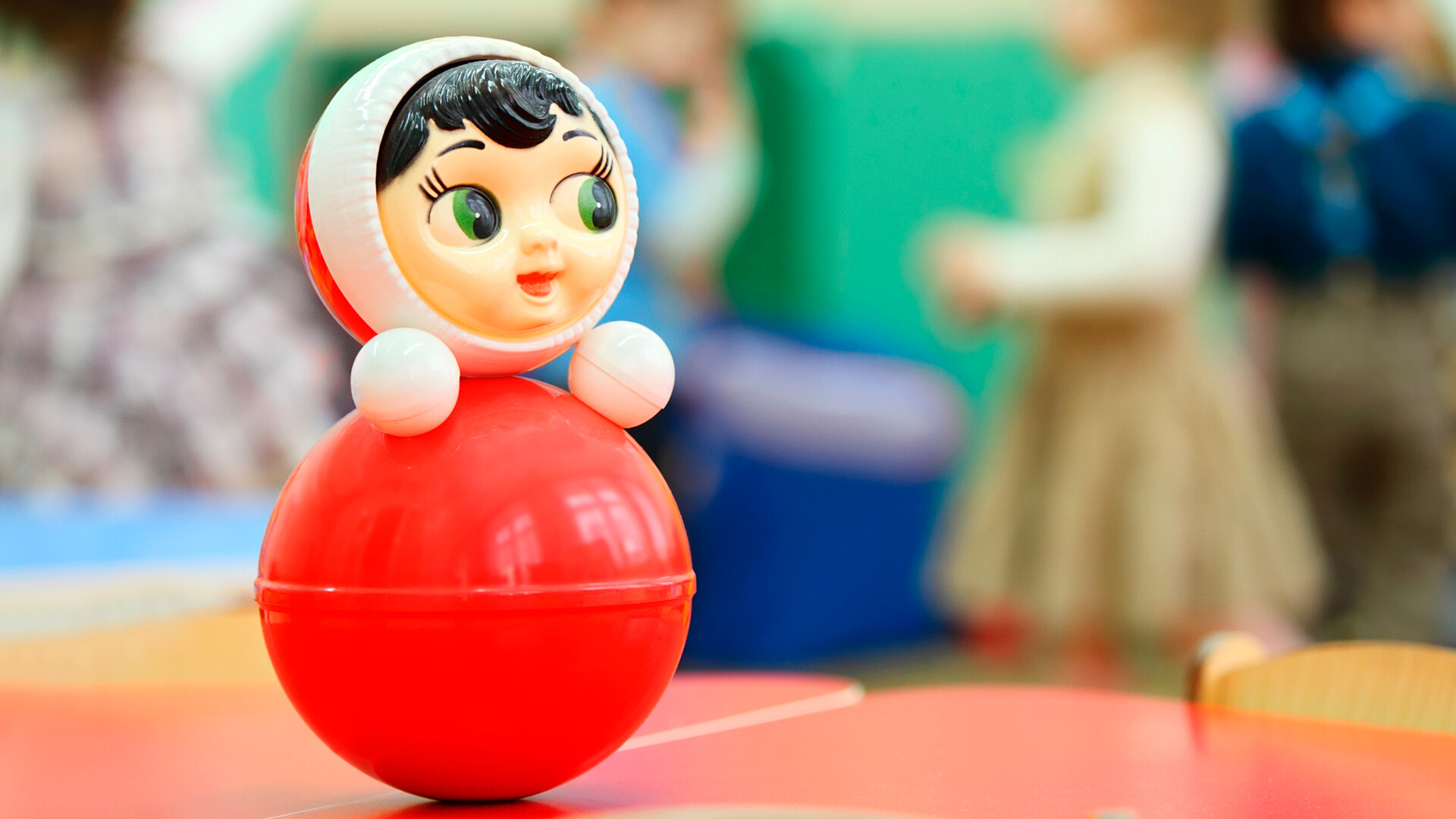
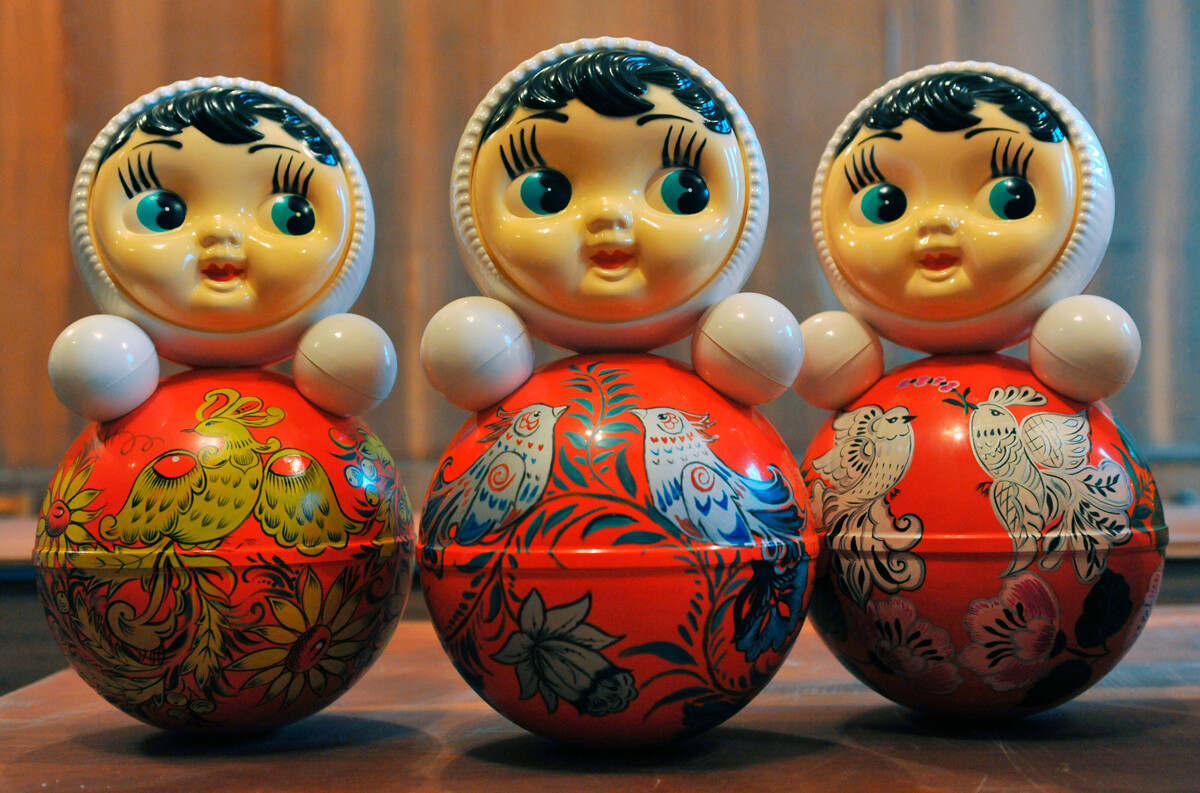
Khokhloma-painted custom dolls
Alexei Sukhorukov/SputnikA nevalyashka doll consists of two hollow spheres. Its main feature is the special weight inside the lower sphere. The doll’s center of mass is positioned so that no matter how hard you try to turn it or put it on its side, it always returns to an upright position.
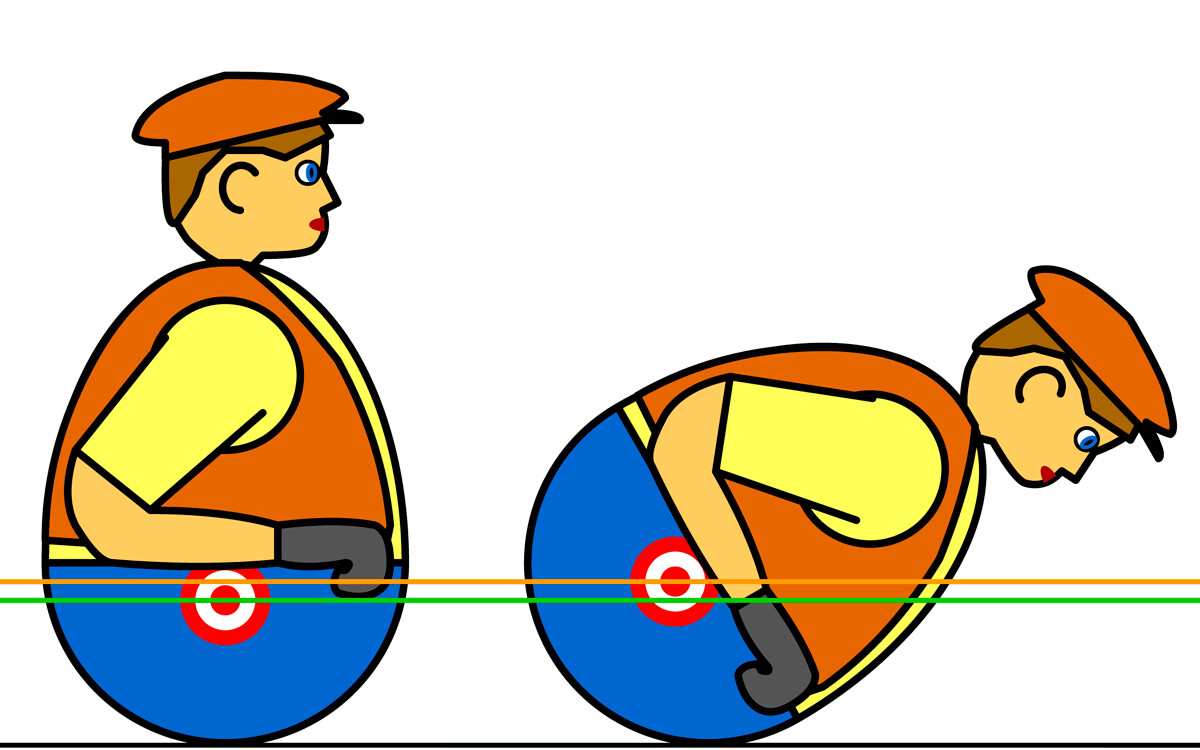
How roly-poly toys work
Damian Yerrick / Public DomainThe name nevalyashka derives from the word valyatsya (to lay around); and indeed this doll truly doesn’t valyaetsya (doesn’t lay around). It also has another name – van’ka-vstan’ka, from the name Ivan – Van’ka – and the word vstan’ (get up).
Nevalyashka usually looks like a baby with the cutest eyelashes. It has a white winter hat on its head and white mittens on its round hands. Literally every child in the USSR had this toy. It was believed that nevalyashka is good for little kids to play with just at the moment when they began to develop their motor skills.
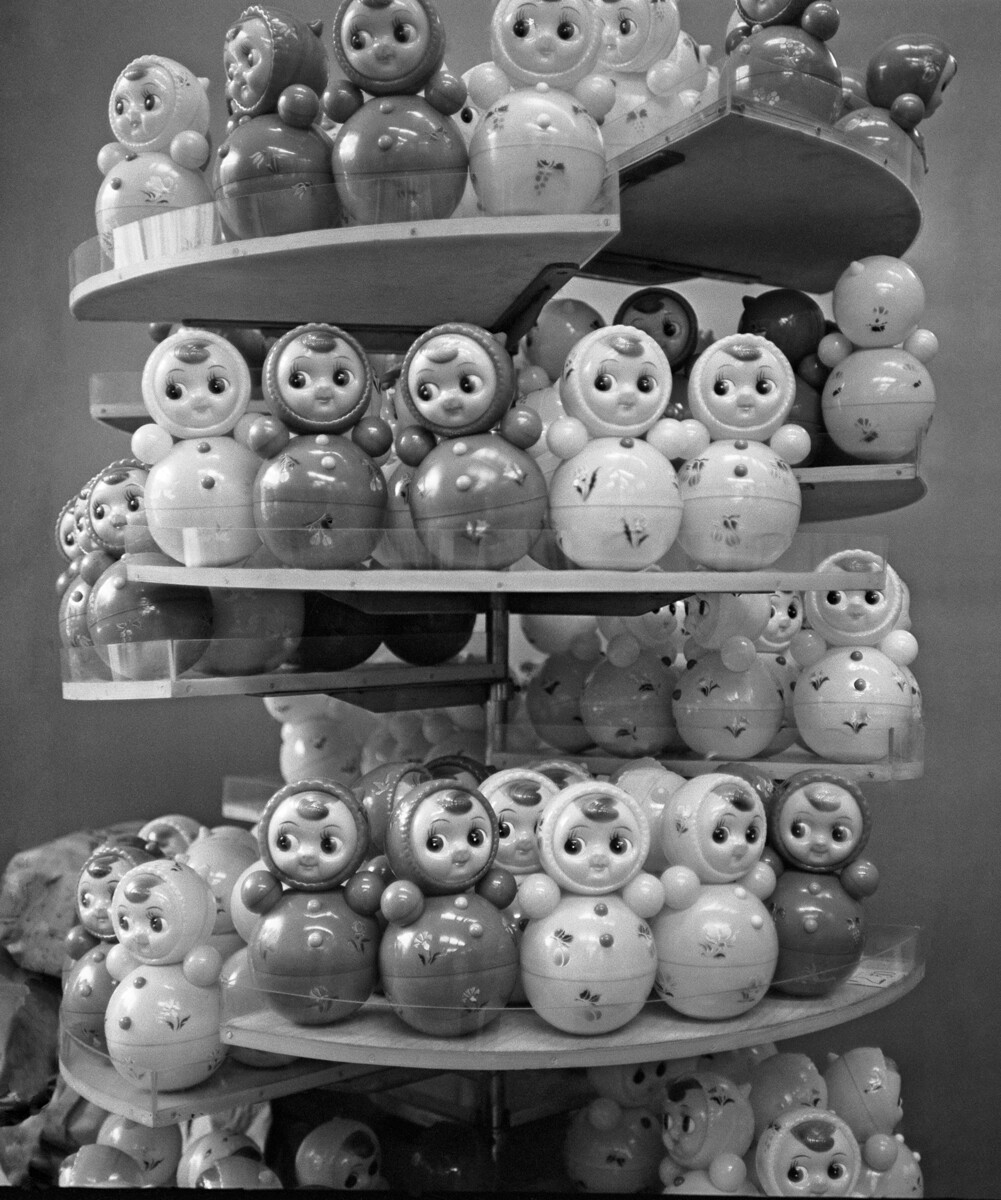
Nevalyashka dolls, 1964
TASSThe nevalyashka was handed down from generation to generation. Many still have these dolls collecting dust somewhere in their closet. Others, to the contrary, are searching for these dolls, or their modern interpretation, in order to give one to their kids with a sense of nostalgic enthusiasm.
The most famous Russian doll is matryoshka, inside which hides several more of the same toys, one smaller than the other. It became a popular souvenir from the USSR and now Russia, but nevalyashka is just as famous. In fact, the rounded shapes of matryoshka served as a prototype for nevalyashka.
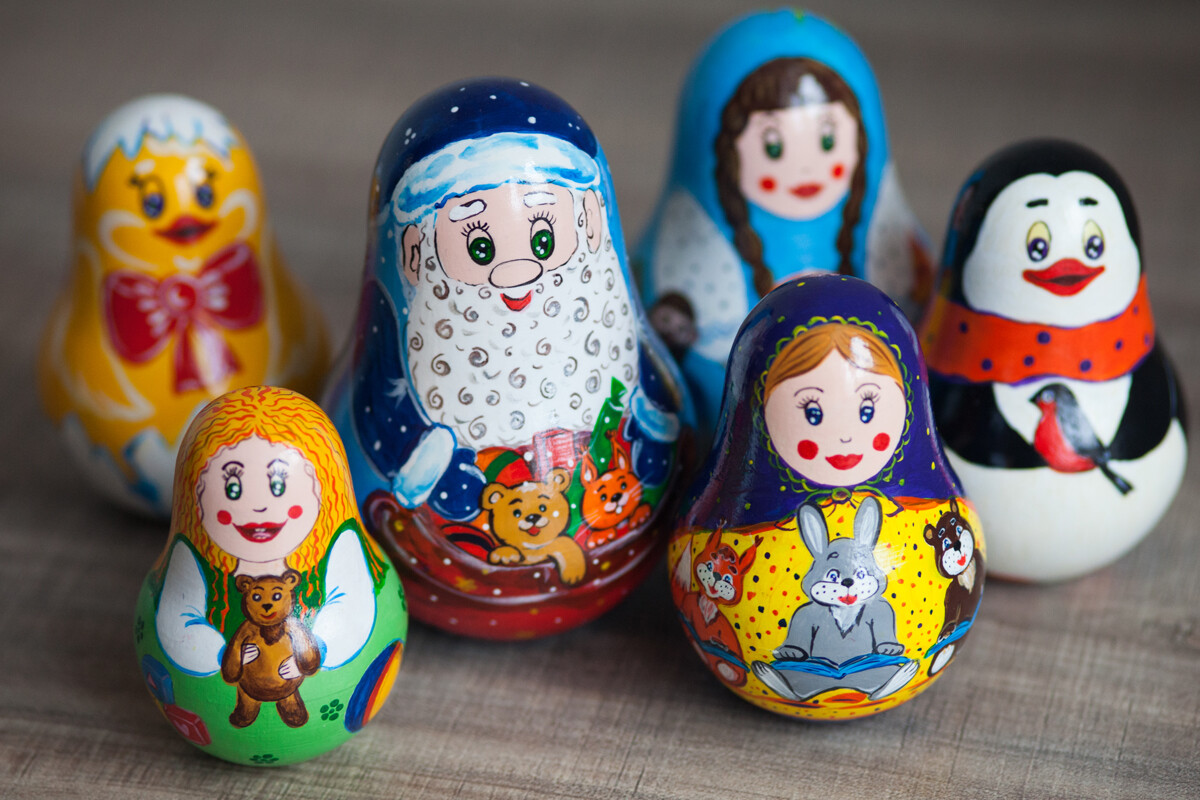
Matryoshka or nevalyashka?
Natalya Gorshkova/SputnikThe first wooden kuvyrkan (“somersaulter”) dolls appeared in Russia at the beginning of the 19th century. Folk craftsmen painted them by hand with bright colors – such dolls were an indispensable attribute of trade fairs in imperial Russia.
The first nevalyashka dolls appeared in China, where clay budaoweng (“old man doesn’t fall”) dolls have been known since the 6th century. Most likely they were brought to Japan, which now has its own okiagari-koboshi roly-poly doll, as well as the insanely popular wooden Daruma dolls that, it was believed, brought good luck. (They were modeled after the Buddhist Bodhidharma, who meditated for nine years until his arms and legs atrophied and fell off).
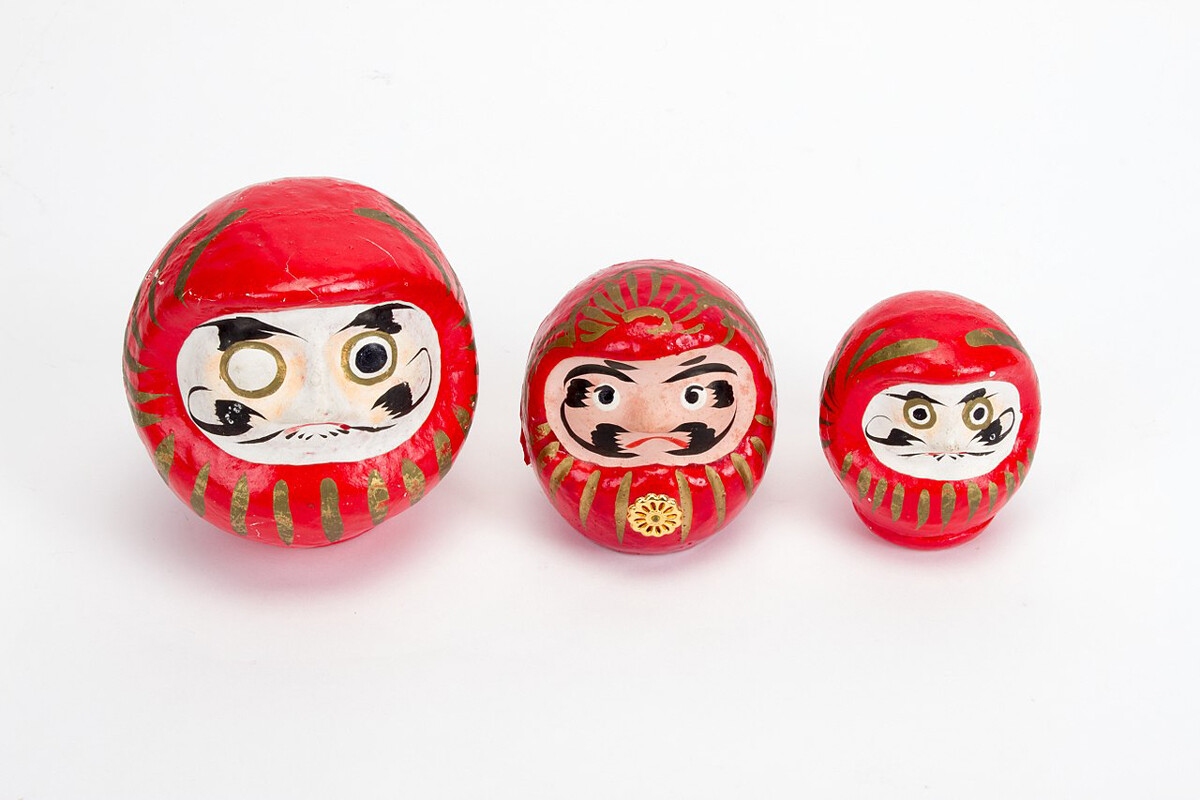
Daruma dolls
Collection of Auckland Museum Tamaki Paenga Hira (CC BY 4.0)From Asia, such dolls were brought to Europe as souvenirs. France has its own version – culbuto or ramponneau. Also, Germany had its own wooden Stehaufmännchen (“get-up men”).
In the 1970s, the famous Playskool dolls named Weebles, which resemble an egg, appeared in the U.S. In English such dolls are called “round-bottomed dolls” or “roly-poly”; (a particular insect, a pill bug, rolls into a ball if threatened; it’s also popularly known as a roly-poly).
Nevalyashka gained much popularity particularly in the USSR. Perhaps the most shocking fact is that this innocent child’s doll has always been produced at the Tambov Gunpowder Plant.
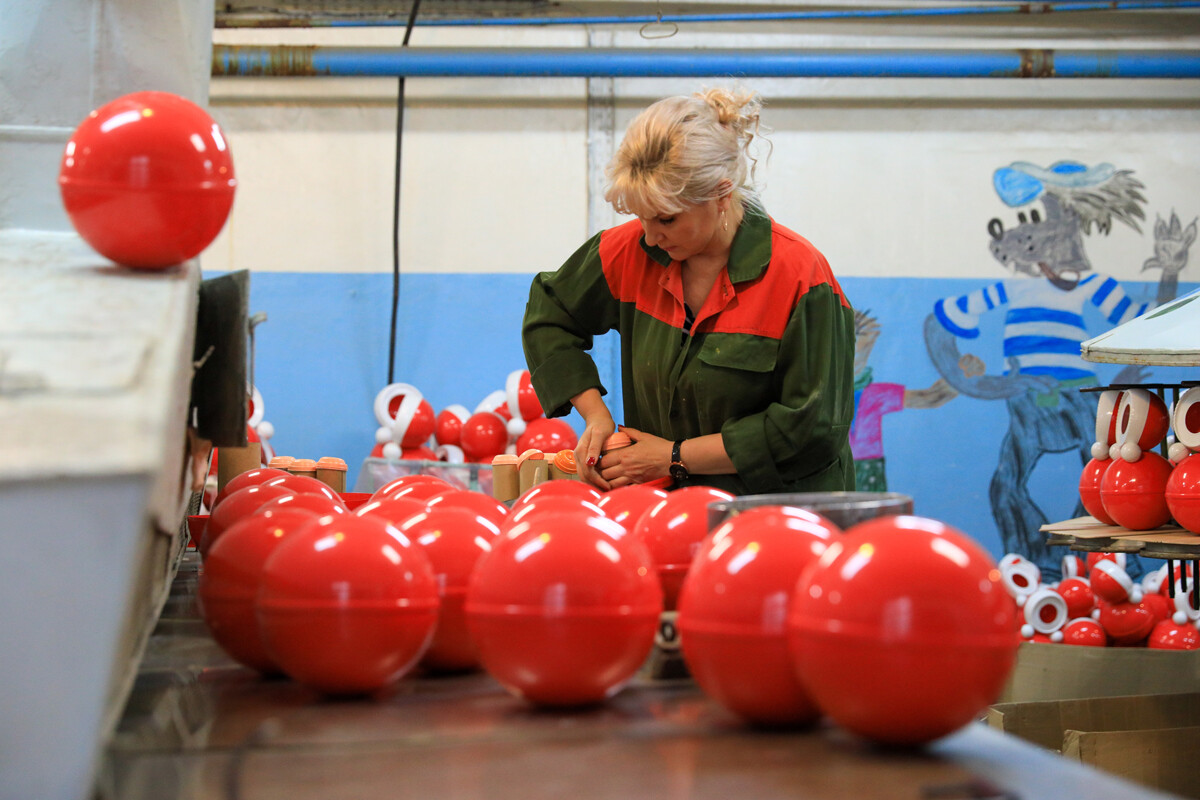
Nevalyashka production at the Tambov Gunpowder Plant
Alexander Ryumin/TASSIn 1957, this fearsome defense enterprise, which supplied the country with gunpowder and ammunition rounds during World War II, decided to use its vast amount of gunpowder production waste (celluloid) for civilian purposes. And so, the factory began producing toys for the amusement of children. By the beginning of the 1960s they produced more than one million nevalyashkas – many of which were exported, and not just to the socialist bloc countries, but also to the U.S., China and Latin America.
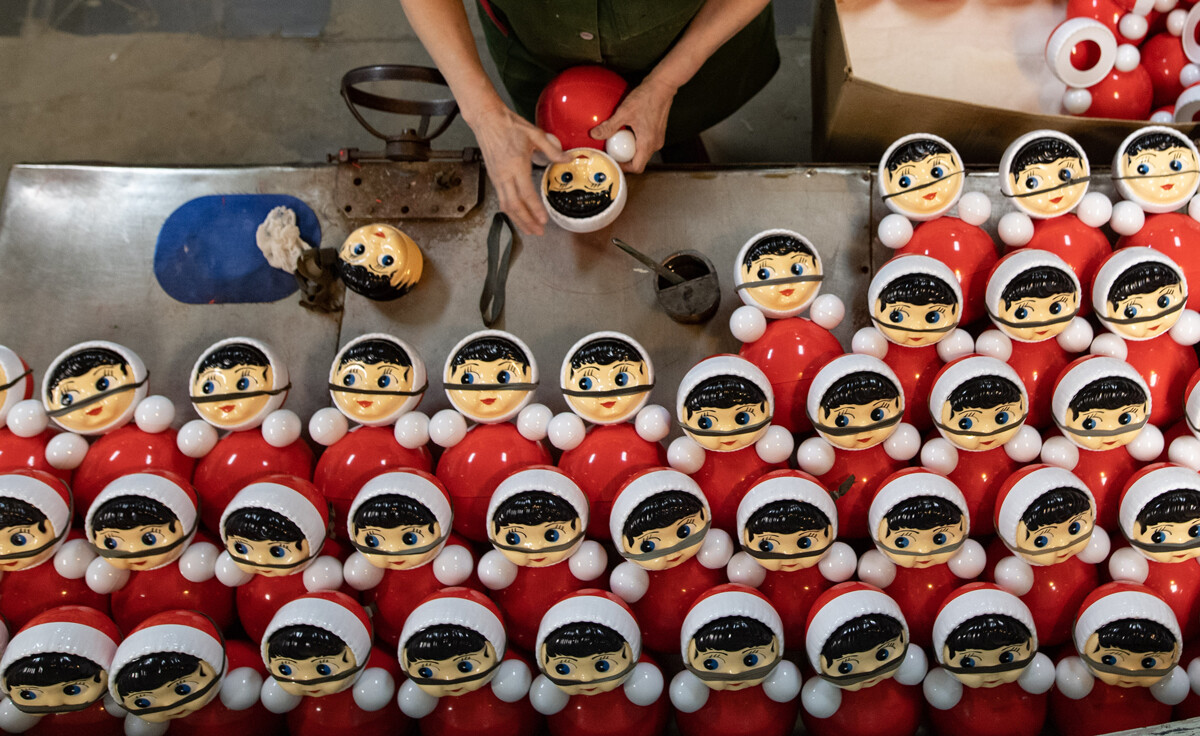
Nevalyashka production at the Tambov Gunpowder Plant
Ilya Pitalev/SputnikLater they switched to different material – colorless and transparent plastic, which wasn’t as flammable as celluloid. In the 1990s, the production of nevalyashkas also saved the plant from shutting entirely; at that time there were no defense contracts. The toy even has a monument erected in its honor in the city of Kotovsk, in the Tambov Region, where the plant is located.
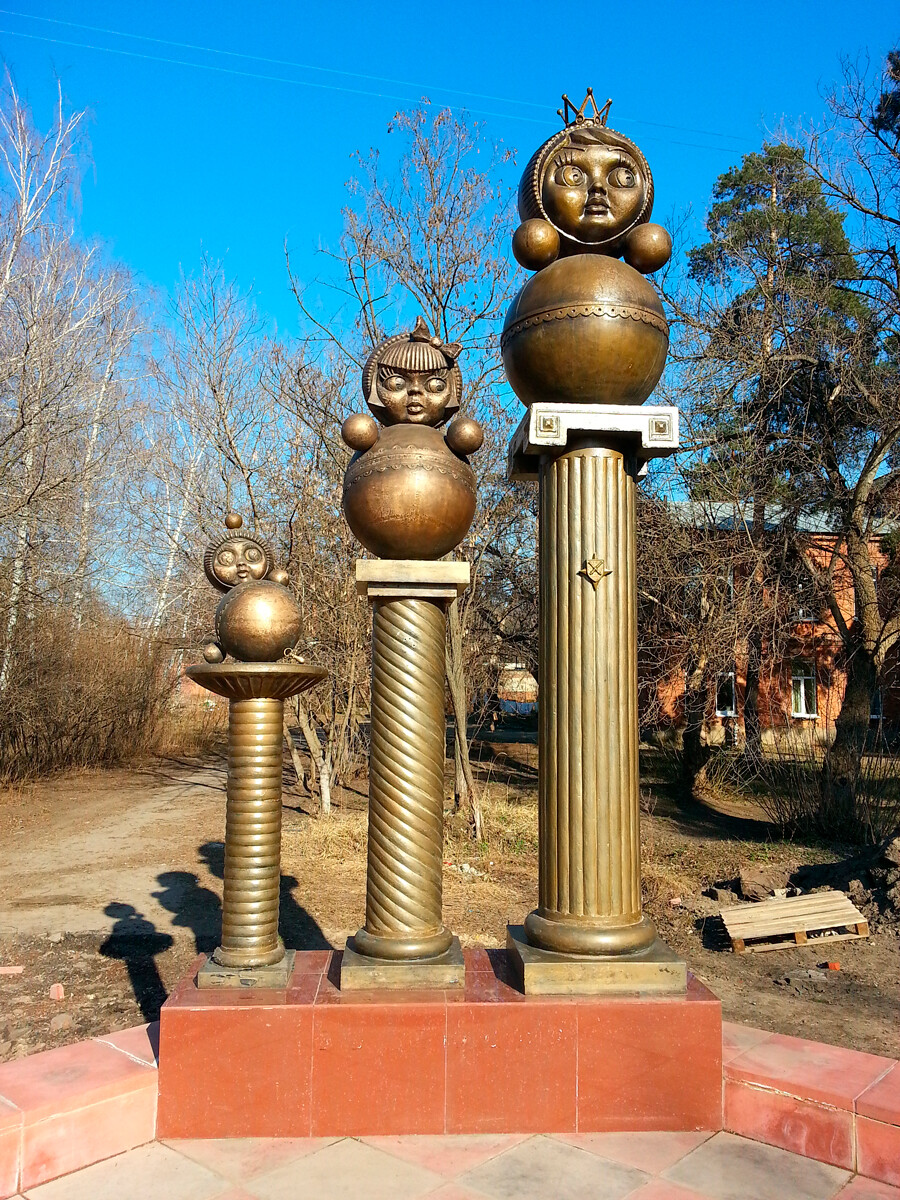
Monument to nevalyashka in Kotovsk, Tambov Region
Anatoly Dushin (CC BY-SA 3.0)Nevalyashkas are still produced at the Tambov Gunpowder Plant, with more than 30 types of nevalyashkas on offer.
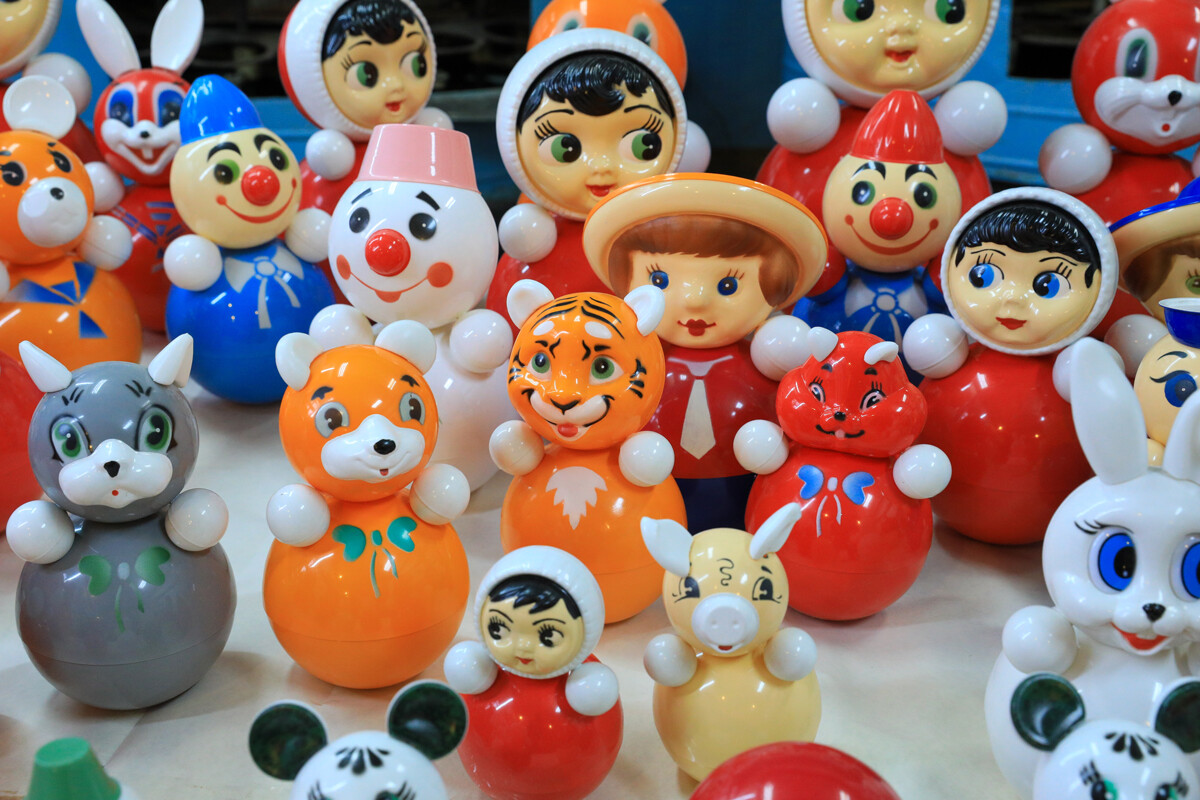
Different types of nevalyashka produced by the Tambov Gunpowder Plant
Alexander Ryumin/SputnikDear readers,
Our website and social media accounts are under threat of being restricted or banned, due to the current circumstances. So, to keep up with our latest content, simply do the following:
If using any of Russia Beyond's content, partly or in full, always provide an active hyperlink to the original material.
Subscribe
to our newsletter!
Get the week's best stories straight to your inbox